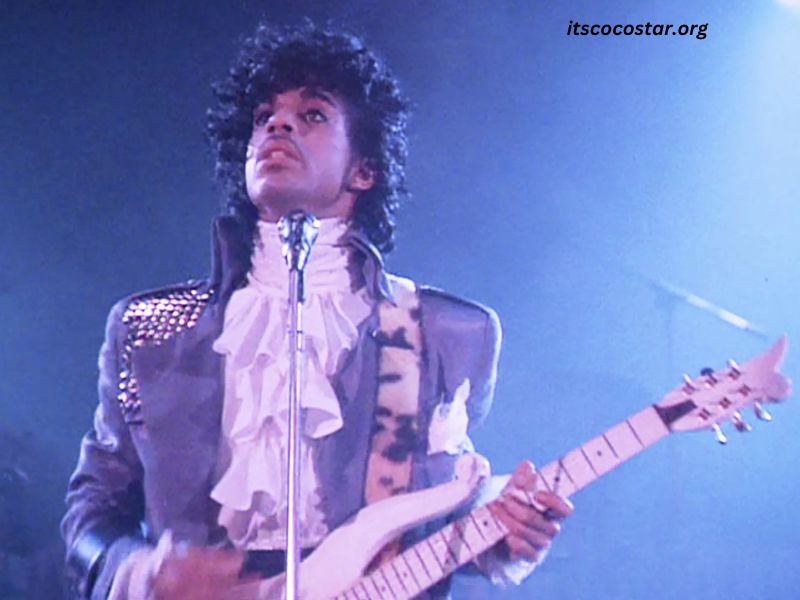Prince and the Revolution stands as one of the most influential bands in the history of music. Known for their groundbreaking sound, electrifying performances, and cultural impact, this group redefined the music scene during the 1980s. For those curious about When Did Prince and the Revolution Start, understanding their genesis involves exploring Prince’s early career, the assembly of the band, and their journey to superstardom.
The Early Days of Prince
Before forming The Revolution, Prince Rogers Nelson had already made waves in the music industry. Born on June 7, 1958, in Minneapolis, Minnesota, Prince was a musical prodigy who mastered several instruments at a young age. By 1978, he released his debut album, For You, under Warner Bros. Records. Prince’s early albums showcased his talent for blending genres like funk, rock, R&B, and pop, but he was still a solo act during this period.
Prince’s breakout moment came with his fifth studio album, 1999 (1982), which introduced a more commercial sound. Songs like “Little Red Corvette” and the titular track 1999 garnered significant attention, solidifying his position as a major player in the music industry. It was during this period that the foundation for Prince and the Revolution began to take shape.
The Formation of Prince and the Revolution
So, When Did Prince and the Revolution Start? The band’s formation can be traced back to 1979, when Prince began recruiting musicians for his live performances. While they weren’t officially called “The Revolution” at the time, this early group laid the groundwork for the iconic band that would later emerge.
The first version of Prince’s backing band included:
- Bobby Z. on drums
- Dez Dickerson on guitar
- Andre Cymone on bass (later replaced by Brown Mark)
- Doctor Fink on keyboards
Though these musicians were essential in shaping Prince’s live sound, the name “The Revolution” didn’t come into play until the early 1980s. The moniker first appeared on the album cover for 1999, written backward in the album’s artwork, signaling the band’s impending evolution.
The Revolution Officially Takes Shape
The official birth of Prince and the Revolution occurred in 1983 when Wendy Melvoin replaced Dez Dickerson on guitar. This marked a turning point, as the band now had the iconic lineup that would go on to define their most successful era:
- Wendy Melvoin (guitar)
- Lisa Coleman (keyboards and vocals)
- Doctor Fink (keyboards)
- Brown Mark (bass)
- Bobby Z. (drums)
This lineup became synonymous with Prince’s meteoric rise to fame during the mid-1980s. Wendy and Lisa, in particular, brought a new dynamic to the group, adding intricate harmonies and creative input that complemented Prince’s visionary style.
Purple Rain: The Revolution’s Breakthrough
Prince and the Revolution achieved worldwide recognition with the release of Purple Rain in 1984. This album wasn’t just a collection of songs; it was the soundtrack to a semi-autobiographical film of the same name. The movie and album catapulted Prince and the Revolution to global superstardom.
The Purple Rain album included hits like:
- “When Doves Cry”
- “Let’s Go Crazy”
- “Purple Rain”
Each track demonstrated Prince’s genius for combining emotional depth with musical complexity. The Revolution’s tight performances and vocal harmonies elevated the songs, making the album an enduring masterpiece.
The Purple Rain tour, which ran from late 1984 to 1985, showcased the band’s incredible live prowess. Their chemistry on stage, combined with Prince’s charismatic presence, made these performances legendary.
Prince and the Revolution’s Impact on Music and Culture
The success of Purple Rain cemented Prince and the Revolution as cultural icons. Their music transcended genres, breaking barriers in pop, rock, and funk while influencing countless artists across the globe. Prince’s flamboyant fashion, combined with the band’s diverse aesthetic, challenged traditional norms of gender, race, and sexuality, making a profound statement about individuality and freedom of expression.
The Revolution wasn’t just a backing band; they were collaborators who contributed significantly to Prince’s music. Wendy and Lisa, for example, co-wrote several tracks and helped shape the band’s distinctive sound.
Albums Following Purple Rain
After the massive success of Purple Rain, Prince and the Revolution released two more albums:
- Around the World in a Day (1985):
This album showcased a more psychedelic and experimental sound, with tracks like “Raspberry Beret” and “Pop Life” becoming fan favorites. It was a departure from the rock-heavy vibe of Purple Rain, reflecting Prince’s desire to evolve artistically. - Parade (1986):
Serving as the soundtrack for the film Under the Cherry Moon, this album included the hit single “Kiss.” The Revolution’s influence was evident throughout, with lush orchestrations and genre-blending tracks.
Despite the band’s continued success, tensions began to grow during this period, leading to significant changes.
The End of Prince and the Revolution
By 1986, Prince’s restless creativity and desire to explore new musical directions led to the dissolution of The Revolution. During the Parade tour, internal conflicts and Prince’s evolving vision resulted in the departure of Wendy Melvoin, Lisa Coleman, and Bobby Z.
Prince continued his career with new backing bands, such as the New Power Generation, but the magic of The Revolution remained a defining chapter in his legacy.
The Revolution’s Legacy
Although their time together was relatively short-lived, the impact of Prince and the Revolution on music history is immeasurable. Their work during the Purple Rain era set a standard for excellence in songwriting, production, and live performance.
In the years following Prince’s passing in 2016, The Revolution reunited for several tribute performances, honoring his memory and celebrating the music they created together. Fans around the world continue to revere their contributions to Prince’s storied career.
Conclusion
To answer the question, When Did Prince and the Revolution Start, the band’s origins can be traced to the late 1970s, but their official debut came in 1983 with the iconic lineup that changed music forever. Their collaborations during the mid-1980s left an indelible mark on the industry, influencing generations of artists and earning them a place in the pantheon of musical legends.
From their explosive entrance with Purple Rain to their innovative albums and unforgettable performances, Prince and the Revolution remain a shining example of what happens when extraordinary talent meets boundless creativity. Their story is one of innovation, transformation, and timeless artistry.







